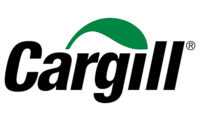Food safety in complex supply chains
As the food supply chain becomes more global and complex, food safety issues tend to be more far-reaching than those experienced decades ago.




Editor’s Note: This article originally published on the Refrigerated & Frozen Foods Web site, a sister publication in the BNP Media portfolio. For more insights, visit refrigeratedfrozenfood.com.
The growing issue of food safety, along with the increased scrutiny on manufacturers to manage associated risks continues to have a significant impact on the food and beverage industry. As the food supply chain becomes more global and complex, food safety issues tend to be more far-reaching than those experienced decades ago. There has also been an increase in consolidation among growers, manufacturers and distributors, meaning food products (and the ingredients associated with them) are being supplied to a wider net of consumers and end markets, exacerbating these issues.
Consumer tastes and preferences are also evolving. Many food companies must source products and ingredients more broadly in an attempt to differentiate offerings, including many foreign-grown items, to meet the culinary experiences consumers demand. By broadening the food supply with these and other non-traditional ingredients, food manufacturers are also exposing the American culture to new origins of risk.
Yet, there have been significant advancements in technology, which have enabled companies to improve the supply chain, particularly when it comes to the level of oversight. Many of these technologies increase efficiency. For instance, they can inform costing practices, purchasing and sales decisions, inventory controls, shipping routes or any number of operational factors, which in turn drives additional profitability. Many of these technologies can also improve food safety protocols through advancements in traceability, monitoring and testing. These benefits are vital to the success of food businesses and manufacturers, but often result in added costs. The challenge for many food companies is how to achieve operational benefits from the costs absorbed to institute these added requirements for food safety oversight.
With this highly sensitive and transformative environment in mind, here are some suggestions and best practices for food and beverage manufacturers managing complex supply chain challenges:
Tip 1. Embrace the benefits of food safety tools and the power associated with an increased level of visibility into the supply chain.
Investment in food safety programs is generally considered a risk mitigation expense. However, these technologies and tools can also be powerful in improving operational decisions and working capital investment. The money that companies invest to improve food safety practices does not have to be a sunk cost.
The employment of heightened food safety protocols can and should be used as a marketing platform. A company’s awareness and vigilance around food safety can differentiate its products in the marketplace, since consumers care about how their food is grown, raised, processed, handled and stored. In addition, the use of traceability standards has been particularly impactful over the last few years, with some companies displaying the manufacturer where the product was sourced.
Tip 2. Seek guidance on risks that are insurable, but perform detailed diligence on the cost/benefit analysis to ensure the policies are not exorbitantly expensive.
It is critical to review the policy language to understand what events are covered or excluded for risks that can be insured. There are many factors that determine coverage decisions within a policy, such as the cause of an event. It’s important to understand whether you are insuring against controllable or manageable risks.
Tip 3. Develop business continuity plans to help quantify the financial impact of a food safety event.
Quantifying financial impacts can help a business fully understand the balance sheet implications and whether it is adequately prepared to absorb them. As a financial partner, I routinely conduct this type of consultative work to help companies develop financial and operational strategies to mitigate these risks.
Tip 4. Take preparedness practices to the next level.
Preparedness is the best risk management technique ahead of a food safety event. Employee training is an important step in preparing for an issue that may arise, however, there are two additional steps that are often overlooked.
First, it’s vital that employees not only understand the steps, but also understand why they are performing a task and how it contributes to the broader effort of the team.
Second, practicing emergency responses through mock situations that simulate real world possibilities is also a crucial component of preparedness practices. Utilizing these steps as part of employee training can materially contribute to workforce engagement, as well as promote successful outcomes in situations where small failures can have sizable consequences.
All participants in the food supply chain – producers, manufacturers, retailers, regulators and consumers – will continue to focus on food safety measures in the years ahead. As the level of scrutiny continues to increase, industry participants must strengthen all facets of their operations to protect against these risks. The steps outlined above are designed to help manufacturers embrace this culture of added oversight, proactively pursue solutions to these challenges and gain competitive advantages in the marketplace. NP
Looking for a reprint of this article?
From high-res PDFs to custom plaques, order your copy today!










